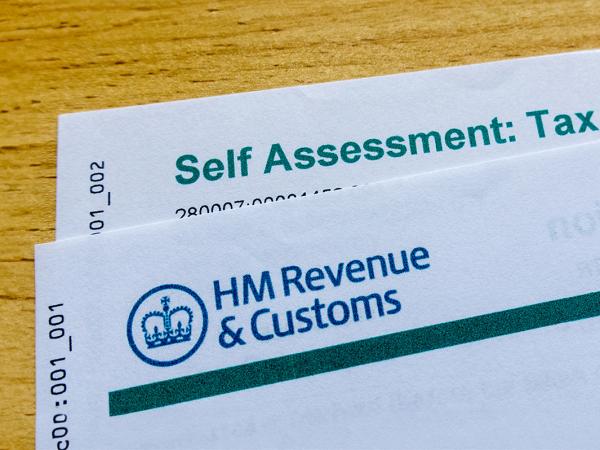Postgraduate loans
This page looks at the repayment of postgraduate loans (both Master’s and Doctoral loans) in England and Wales. Repayments for these loans started to be collected from April 2019. Northern Ireland collects postgraduate loans as Plan 1 loans. From April 2021, Scotland collects postgraduate loans as Plan 4 loans.

Content on this page:
Postgraduate loans: repayment calculation
Repayments of postgraduate loans are due at a rate of 6% for all the 2019/20 to 2024/25 tax years inclusive on:
- your earnings over £21,000 a year, whether from employment or self-employment (note that your earnings are calculated before taking off tax, National Insurance contributions (NIC) or pension contributions).
- other income over £2,000 a year if you are required to fill in a tax return under self assessment and have total income above the £21,000 repayment threshold.
However, the calculations of the repayments are more complicated if you are still repaying a Plan 1, Plan 2 or Plan 4 student loan as mentioned below under the heading: Repaying an undergraduate loan and a postgraduate loan.
Postgraduate loans: when repayments start
When you start paying back your postgraduate loan will depend upon whether you have a Master’s loan or a Doctoral loan and if you are studying part-time or full-time. If you leave your course early, then you should contact Student Finance England or Student Finance Wales about repaying your loan.
Postgraduate Master’s loans
You will usually start repaying your postgraduate Master’s loan from the April after you have finished your postgraduate course if you are earning above the repayment threshold as explained above.
The exception to this is if you are on a part-time postgraduate Master’s course which lasts 3 to 4 years and started in the 2016/17 academic year (for example: started in October 2016) in which case repayments started from April 2019, provided you earned above the repayment threshold.
Postgraduate Doctoral loans
If you have a postgraduate Doctoral loan and are earning above the repayment threshold, then repayments start from the earliest of:
- the April following the end of your course (as in the case of Plan 1, Plan 2, Plan 4 or postgraduate Master’s loans); or
- the April four years after the start of your course (so if you started your postgraduate Doctoral loan in October 2019 this would be April 2024).
Postgraduate loans: ways of making repayments
There are three ways of repaying:
- through your wages, under Pay As You Earn (PAYE)
- through HM Revenue & Customs (HMRC) via the self assessment system
- direct to the Student Loans Company (SLC).
How do you know which one (or more than one, in some cases) applies to you?
- If you are employed in the UK then your postgraduate loan will be repaid by PAYE. See the heading below: Postgraduate loans when employed
- If you are self-employed in the UK then your postgraduate loan will be repaid through self assessment. See the heading below: Postgraduate loans under self assessment
- If you have other income, for example rental income, and HMRC ask you to fill in a tax return then your postgraduate loan will be repaid through self assessment. See the heading below: Postgraduate loans under self assessment
- If you are employed and self-employed then your postgraduate loan will be repaid through both PAYE and self assessment. You do not pay twice, because the repayments made under the PAYE system come off your self assessment bill
- If you are going, or have gone, abroad then your postgraduate loan will be repaid directly to the SLC
- If you have nearly repaid your loan in full and are employed then it may be possible to opt out of PAYE and switch to a direct debit to the SLC. See the heading below: Postgraduate loans when employed
You can make voluntary or extra payments to the SLC, but this does not reduce any amount that you might owe under PAYE or self assessment. Instead, you pay off your loan faster.
Postgraduate loans when employed
Employee student loan repayments come off your wages before you get them, so check your payslips. Your payslips will usually have an entry described as ‘student loan’ but will not show how the repayment has been calculated.
If you are also repaying a Plan 1, Plan 2 or Plan 4 loan, as explained below under the heading Repaying an undergraduate loan and a postgraduate loan, then you may see two lines on your payslip for student loan repayments. Not all payslips show this extra detail, so it is important that you understand how your loan repayments have been calculated.
Your employer is usually tasked with taking student loan repayments off your wages through the Pay As You Earn (PAYE) process.
When you start a new job, your employer will ask you to complete a starter checklist. It is important that you complete this form accurately about what loans you have so that repayments are calculated correctly. We provide an annotated example of a starter checklist to help explain how you should answer the questions so that the correct loan repayments are made.
The Student Loans Company (SLC) will notify HM Revenue & Customs (HMRC) at the start of the tax year (6 April) if you are due to start repayments and HMRC in turn issue a ‘start notice’ to your employer who will then calculate student loan deductions along with your tax and National Insurance Contributions (NIC) and pay them to HMRC through the PAYE system. HMRC pay these deductions to the SLC. The SLC then show your new loan balance on your borrower account, however this can take some time to be updated to show an accurate position. If you are nearing the repayment of your loan in full, you can sometimes ‘opt out’ of PAYE and arrange a direct debit to the SLC instead.
Your earnings for postgraduate loans are calculated in the same way as they are for NIC. Each pay day is looked at separately. Your repayments may vary according to how much you are paid in any particular week or month. If your income falls below the repayment threshold for that week or month, your employer should not make a deduction.
Overpayments via PAYE
If you have fluctuating income and your pay varies per pay period, this may result in some pay periods where you earn above the repayment threshold and so student loan repayments are deducted by your employer.
Overall, if you earn less than the annual repayment threshold (£21,000 in both 2024/25 and 2023/24) but have had postgraduate loan repayments deducted through the PAYE system, then you can only get a refund based on your annual earnings if either:
- you have to complete a self assessment tax return (as mentioned under the heading Postgraduate loans under self assessment below); or
- you apply to the SLC for a refund.
Employed in more than one job
If you have more than one employment and work for different, unconnected employers, your postgraduate student loan deductions are calculated separately for each job. Again, this follows a similar principle to NIC which is usually calculated on a job-by-job basis.
Postgraduate loans under self assessment
Having a student loan is not in itself a reason for needing to complete a self assessment tax return. You usually only have to complete one if it is needed for your taxes and HM Revenue & Customs (HMRC) ask you to do so (or you notify them that you have a tax reason for needing one).
If you are required to complete a tax return, the form and the calculation also take into account your student loan repayments.
If you complete a self assessment tax return then the same rules apply to how your postgraduate loan repayments are calculated, as explained under the heading above: Postgraduate loans: repayment calculation.
Unearned income
Unearned income includes, for example, interest from savings or profits from letting out a property (after taking account of the property allowance).
If you have to file a tax return and you get more than £2,000 a year in unearned income, this affects how much you have to repay, if your total income is above the £21,000 repayment threshold.
Importantly, the £2,000 is ‘all or nothing’. This means that if you get any unearned income of up to £2,000 a year, it is not taken into account at all; but as soon as you go over £2,000, the whole amount is taken into account.
Payment due date
Under self assessment, your student loan repayments are due on 31 January following the tax year end. So, for the tax year ended 5 April 2025, your payment will be due on 31 January 2026.
Student loan repayments are not part of any payments on account you are due to make under self assessment, nor do you need to take them into account if you are working out whether you can claim to reduce your payments on account.
Student loan repayments under self assessment are included with your overall tax and National Insurance Contributions (NIC) bill. So if you are late paying, you will face the same penalty for your student loan repayment as the rest of your tax bill. We provide some guidance on what to do if you are having difficulty paying on our page, Tax payment problems and debt. There is also information explaining the budget payment plan (also known as ‘pay weekly or monthly’) for making student loan repayments through self assessment.
Our page on self assessment: student loan repayments explains what information on your student loans you may need when completing your self assessment tax return.
Voluntary repayments and overpayments
You can make voluntary repayments direct to the SLC at any time. But if you do so, these payments will not reduce the amount that you have to pay under self assessment and therefore should not be included on your tax return.
If you have made repayments direct to the SLC because you have been working abroad and then complete a self assessment return, HMRC will calculate your loan repayments without considering any direct repayments.
If, however, you are employed and repayments have been deducted under Pay As You Earn (PAYE) by your employer, these come off the amount due under self assessment.
If you are in the situation where you think the amount due under the self assessment calculation is too much – that is, you will then be owed money by the SLC – you can contact HMRC to apply for an informal ‘stand over’. This would allow you to pay a smaller amount in the meantime until the position is resolved.
If you overpay your student loan through self assessment, then the overpayment will be allocated against any other outstanding amounts due such as income tax or National Insurance contributions. If there are no outstanding liabilities, then you can request the overpayment to be repaid.
Repaying an undergraduate loan and a postgraduate loan
Many postgraduates will also be repaying student loans for their undergraduate studies. Repayments of Plan 1, Plan 2 and Plan 4 loans are also made through the tax system.
Postgraduate loans repayments are calculated and, if applicable, repaid concurrently with Plan 1, Plan 2 and/or Plan 4 loan repayments.
- Euan - example of an employee with a Plan 1 loan and a postgraduate loan
-
Euan finished his postgraduate course in the summer of 2023 and started work a few months later. He has a Plan 1 loan, which he has been repaying both before he started his postgraduate Master’s course and since he started work in September 2023. Euan earns £27,000 and is paid monthly so his monthly salary is £2,250.
The 2024/25 repayment threshold for a Plan 1 loan is £24,990 per year (£2,082.50 per month) and for a postgraduate loan, it is £21,000 per year (£1,750 per month).
In April 2024, Euan receives his payslip and his total deduction for student loan repayments is £45.07.
This is calculated as follows:
- Plan 1 loan: £2,250 less £2,082.50 = £167.50
Repayment rate is 9% so the Plan 1 repayment is £167.50 x 9% = £15.07. - Postgraduate loan: £2,250 less £1,750 = £500
Repayment rate is 6% so the postgraduate loan repayment is £30.
The total monthly repayment Euan makes in April 2023 is £15.07 + £30, which is £45.07.
- Plan 1 loan: £2,250 less £2,082.50 = £167.50
- Ava - example of repayments under self assessment with a Plan 2 loan and a postgraduate loan
-
Ava is self-employed and has calculated profits of £35,000, she also has rental profits of £3,000 after using available tax reliefs. She has a Plan 2 loan and a postgraduate loan which is due to be repaid from April 2024.
The repayment threshold for a Plan 2 loan is £27,295 per year and for a postgraduate loan it is £21,000 per year.
Ava fills in her 2024/25 self assessment tax return and she has total taxable income of £38,000. Please note that all of Ava’s unearned income is included as it is above the £2,000 unearned income threshold. Ava’s total student loan repayments for 2024/25 are calculated to be £1,983.45, which will be due by 31 January 2026.
The loan repayments are calculated as follows:
- Plan 2 loan: £38,000 less £27,295 = £10,705
Repayment rate is 9% so the Plan 2 repayment is £963.45. - Postgraduate loan: £38,000 less £21,000 = £17,000
Repayment rate is 6% so the postgraduate loan is £1,020.
The total repayment Ava makes under self assessment is £963.45 + £1,020, which is £1,983.45.
- Plan 2 loan: £38,000 less £27,295 = £10,705
- Arjun - example of an employee with a Plan 4 loan and a postgraduate loan
-
Arjun has a Plan 1 student loan which switched to a Plan 4 loan from April 2021, he relocated from Scotland to England after his undergraduate degree and a few years later started his postgraduate course. He finished his postgraduate course in the summer of 2023 and started work a few months later. Arjun has been repaying his undergraduate loan (Plan 1 then Plan 4 repayments) before he started his postgraduate course and since he started work in September 2023. Arjun earns £36,000 and is paid monthly so his monthly salary is £3,000.
The repayment threshold for a Plan 4 loan is £31,395 per year (£2,616.25 per month) and for a postgraduate loan, it is £21,000 per year (£1,750 per month).
In April 2024 Arjun receives his payslip and his total deduction for student loan repayments is £109.53.
This is calculated as follows:
- Plan 4 loan: £3,000 less £2,616.25 = £383.75
Repayment rate is 9% so the Plan 4 repayment is £383.75 x 9% = £34.53. - Postgraduate loan: £3,000 less £1,750 = £750
Repayment rate is 6% so the postgraduate loan repayment is £75.
The total monthly repayment Arjun makes in April 2023 is £34.53 + £75, which is £109.53.
- Plan 4 loan: £3,000 less £2,616.25 = £383.75
More information
GOV.UK has information on postgraduate Doctoral loans and Master’s loans.
Also there is information on GOV.UK on how to complete the student loan questions on paper and online self assessment tax returns.



